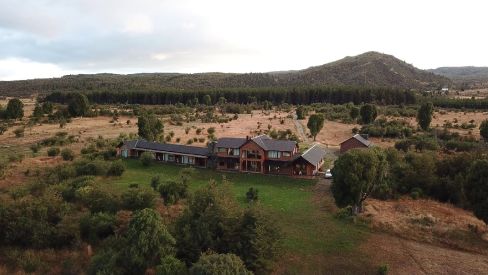I’ve heard people talk badly about lake fishing many times. There’s no doubt fishing in the river is the top expression of fly fishing, but that doesn’t mean lake fly fishing can’t give us unforgettable moments. So I want to dedicate some lines to this fishing that has always fascinated me; with floating lines, damselfly and dragonfly imitations in calm bays with vegetation.
Damselflies fly, copulate and lay eggs in these bays, so are a great feeding opportunity for trout. I’ve seen the most spectacular scenes, trout following rapidly a damselfly that flies inches away from the surface to finally jump and catch it; also a damselfly trapped in the water tension and a fish falling directly at it, knowing it may escape (I’m including here the video “Damsels in distress” that shows this very well).
Let’s talk about the flies; I’ve come to be a fan so much that I have a special box with damsels, dragons and their nymphs. This way I’ve tried adult imitations made with deer hair only, others made of foam and deer wings, other with foam and crystal flash wings, others with foam and transparent silicon wings. If we think on how a trout sees this from below, in contrast with the sky, maybe the best variations are the last two. Yet, although arguable, I choose foam with short deer hair wings, as they float very well, look good in the distance, and there’s no difference in the strikes (careful: while we cast, these are like a helix, so its sure we’ll have our leaders twisted, that’s why I choose short wings and the least possible casts).
As for colors, many times we see these in pale blue foam, I’ve seen trout reject these and attack brown ones with no hesitation. A damsel trapped in the water surface barely moves its wings, so a soft movement of the tip of the rod or two sharp short strips is enough to imitate this moment correctly. Another aspect is that many times damsels die drowned and lay still on the surface, still these are attacked by trout, so we can pose the fly and let it lay there sometimes.
Let’s not forget that when we don’t see the damsels flying, the nymphs are still a part of the food of the trout. They live a long time under the water and are extremely aggressive, preying on other insects. I include some videos to show this state in a better way.
A raft or a boat with oars, even a belly boat, are all good devices to fish a bay correctly without noises. In first term, going with friends is the best fun, even the one rowing is a part of the fishing as he must approach the scene and be alert for trout activity (I enjoy it as much as having a rod in hand). In the second term, being alone, we may integrate better with the environment and atmosphere.
Maybe the funniest story I recall about this type of fishing was a morning spent with Hernan Guemes, a school friend, in a bay with vegetation. I remember trying some adult and nymph imitations and having not even one strike. We stopped for lunch and as we grabbed a sandwich, leaving a damsel imitation two meters away on the water, a nice trout came and grabbed it, splashing us, then rushed taking the line away rapidly. Luckily we had lots of loose line and we grabbed the rod to finally catch that trout!
I cannot forget about the first time I did this kind of fishing. My father taught me how to cast and days later I went to the lake. I had a floating line and a damsel imitation, casting on a great flat behind some vegetation that marked the deep waters. There I saw a small rainbow trout attack my fly. I was so shocked about the situation, that I couldn’t hook her and she got away. That day I fell in love with this situation, and I began looking for thickly vegetated bays in the hot months.
Many lakes in North Patagonia have quiet bays with vegetation where we can do this, where a nice sunny afternoon with good strikes turns into unforgettable memories for any fisherman. I think imitating damsels is a whole different chapter in fly fishing!































